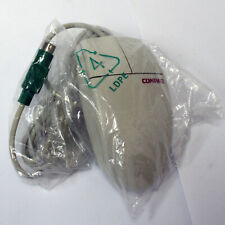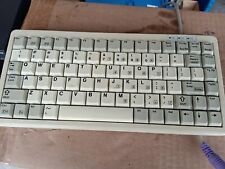-
Junior Member
registered user
Re: Chromium and remastering Knoppix

Originally Posted by
utu

Greetings again, Klaus
In regards my comment on Chromium being a step backward:
I am used to tailoring font types & sizes and deleting underlines to suit my
own taste as one can do with Firefox & related browsers. This feature is
diminished in Chromium. Chromium has the feel of a browser for a netbook.
Firefox 5 has a very elegant feel to it by comparison, better suited I think
to a laptop.
Ok, though I had the opposite impression, chromium being very elegant and slim, with focus on the "content" part which fills over 90% of the screen, and no unnecessary buttons or status bars, the latter ones being replaced by small on-screen status messages. The impression I had of chromiums look&feel plus rendering speed may be related to the fact that I do use mostly small netbooks for everyday work, rather than large screens. The font setting does not look too much different to me than the one in firefox, and many options not in the settings menu, can be set via gconf instead.
One problem I noticed is the missing support for the graphical screenreader orca.

Originally Posted by
utu

In regard to LibreOffice, it seems to me that in earlier versions of
OpenOffice that there were stand-alone packages for write & calc, possibly
other elements. The current arrangement with LibreOffice as you know,
cannot be slimmed down much by unloading unused elements. The option to use
some earlier versions would suit my needs. I've been using this LibreOffice/
OpenOffice since it was called StarOffice.
I've been using the overlay feature, if I recall, since 6.2.1 and it continues
to serve me well. My niche has been 2 Gb SanDisk LiveUSBs. I've resisted
remastering new compressed images up until now for lack of Gigabytes and for
resistance against the complexity . I've just solved the storage restriction.
A menu feature in PCLinuxOS called 'mylivecd' purports to do all the hard work
of making a new compressed image. Presumably one uses Synaptic to add &
remove program elements from a live system and then points mylivecd to an
appropriately large area in which to prepare a compressed image (iso).
This iso is usually first tested in a VirtualBox or VMWare Player before
making an actual LiveCD or LiveUSB. Uses a lot of Drake processes.
I use a quite complex Makefile for this procedure, but you still need to know how to properly install or remove packages in Debian in order to rebuild the compressed image. I would tend to see advanced filesystem tree knowledge as requirement for successfully building a compressed file system, and don't trust automatic tools too much. But then, that's just my opinion. If you can write a script suitable for beginners, that does everything automatically, I can schedule it for inclusion. 

Originally Posted by
utu

Werner Schulz, on this forum, has a similar approach requiring, as you say
more than just beginner's talents to accomplish. In my case, I know what
I want to accomplish, but I want some automation to make it happen.
Still, someone has to write and package the automatism in a way that makes it difficult to break something seriously, by accident.

Originally Posted by
utu

Very nice to have you join our forum. I hope you'll check in on us more often.
Best regards.
It's a matter of time resources. Unfortunately, I don't have as much as I should, but I always try to answer the most urgent questions.
Regards
-Klaus
 Posting Permissions
Posting Permissions
- You may not post new threads
- You may not post replies
- You may not post attachments
- You may not edit your posts
-
Forum Rules


Vintage Tandy 2500 XL 25-4074 Computer
$159.00

Vintage Aldus Pagemaker 5.0 for Mac on 13 3.5" Floppy Diskettes (c) 1993
$12.99

Vintage AppleMouse II User's Manual - Vintage
$8.00

Vintage MediaMate 3.5" Floppy Disc Holder with Dividers
$20.00

Vintage Compaq 141649-004 2 Button PS/2 Gray Mouse M-S34 - FAST SHIPPING - NEW
$8.99

Vintage Apple Technology Update VHS Tape January 1997
$15.00

Vintage Tandy ps/2 Enhanced Keyboard Tested works
$120.00

Vintage APPLE MACINTOSH PLUS - Apple MAC Model M0001A - No Power - Sold As Is
$98.00

Vintage CHERRY Mini Mechanical Keyboard Model ML4100 5 Pin Connector w/PS/2
$19.95

🔥🔥🔥 Vintage D33007 Motherboard AU31-L With AMD Athlon CPU and Memory
$29.99




 Reply With Quote
Reply With Quote










